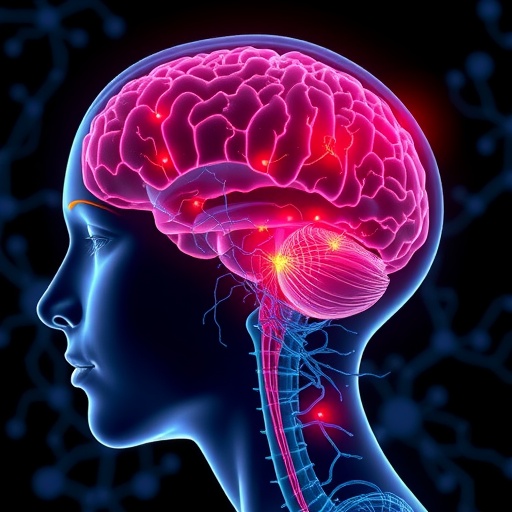Recent research has unveiled a significant link between orthodontic pain and anxiety, focusing on the neuronal architecture of the hippocampus. Conducted by a team of researchers led by Que et al., the study highlights how the discomfort associated with orthodontic treatments can induce alterations in brain structure that may contribute to heightened anxiety states. This connection offers new insights into the psychological implications of dental procedures, which are often viewed as mere physical alterations to the oral cavity.
Orthodontic treatment, which is designed to correct misaligned teeth and jaw issues, is a common practice among children and adolescents. Despite its aesthetic and functional benefits, many patients experience pain during the adjustment period that raises concerns beyond the treatment’s physicality. The study conducted by Que and colleagues delves into this emotional side, suggesting that the anxiety experienced might not be merely a reaction to discomfort but a complex physiological response tied to changes in brain structure.
At the heart of this research lies the hippocampus, a crucial area of the brain associated with memory and emotional regulation. The study found that consistent exposure to pain from orthodontic adjustments led to structural changes in neuronal architecture within this region. This alteration was evidenced by variations in the density of neurons and synaptic connections, which play vital roles in processing emotions and forming memories.
The researchers employed a rigorous methodology, utilizing animal models subjected to simulated orthodontic pain to monitor changes in the hippocampus. Through advanced imaging techniques and histological analyses, they observed that subjects experiencing prolonged discomfort demonstrated a notable decrease in hippocampal volume. This reduction correlates with findings in other studies that link brain volume to anxiety disorders.
Moreover, the study explored the biochemical pathways involved in this process. The results indicated an upregulation of stress-related proteins and inflammatory markers in the hippocampus, suggesting that pain influences neuroinflammatory processes. This finding aligns with existing literature that identifies inflammation as a key player in both pain perception and mood disorders, establishing a potential mechanism through which orthodontic pain could exacerbate anxiety.
As the research progressed, the psychological assessments of the animal models revealed increased symptoms of anxiety. Tests designed to evaluate anxiety-related behaviors showed that those treated with simulated orthodontic pain exhibited heightened levels of stress, reflective of the underlying neuroanatomical changes. This behavioral aspect underscores the notion that pain can precipitate profound emotional responses, extending the implications of dental discomfort far beyond the clinic.
The interplay between chronic pain and mental health is a burgeoning field of study, and this research contributes to the expanding dialogue about how physical processes impact psychological well-being. The implications for orthodontic practice are significant, as dentists and orthodontists may need to reassess how they approach pain management during treatments. Understanding the potential for anxiety to develop as a response to pain can inform strategies aimed at mitigating discomfort and its psychological ramifications.
One of the essential takeaways from the study is the importance of early intervention. Recognizing the signs of anxiety in patients undergoing orthodontic treatment might allow practitioners to implement additional support measures. This could include counseling, relaxation techniques, or adjustments to treatment protocols that prioritize patient comfort. By taking a holistic approach to orthodontic care, dental professionals can foster not only physical health but also mental well-being.
The findings also open the door for future research opportunities. Investigating the long-term effects of orthodontic pain on mental health can provide a clearer picture of the risks associated with these common dental procedures. Further studies could also explore variations in susceptibility among different populations, particularly children and adolescents, who may have distinct responses to orthodontic treatment.
Additionally, the evolving understanding of pain as a multi-dimensional experience suggests that incorporating interdisciplinary approaches could enhance patient outcomes. Collaboration between orthodontists, psychologists, and neurologists might yield comprehensive care strategies that address both the physical and emotional aspects of treatment. As mental health continues to gain attention within healthcare, the implications of this research underscore the need for integrated approaches in dentistry.
Overall, the study conducted by Que et al. establishes critical connections between pain, anxiety, and the underlying neurological architecture of the brain. By shedding light on how orthodontic treatments can inadvertently affect emotional health, the research paves the way for innovative practices that prioritize patient experiences. As ongoing investigations delve deeper into this relationship, the findings will undoubtedly shape the future landscape of orthodontic care.
The clinical applications of such research are profound. As orthodontic practices evolve to better understand the interplay of pain and anxiety, they hold the potential to improve not only the efficacy of treatments but also the overall patient journey. Patients who feel understood and cared for in their emotional responses to treatment may be more likely to adhere to their orthodontic plans and achieve better outcomes.
In conclusion, the landmark study by Que et al. brings to the forefront the psychological dimensions of orthodontic care, urging both practitioners and patients to recognize the impacts of pain on mental health. As the field advances, the integration of psychological insights into orthodontic practices could set a new standard for comprehensive patient care, improving the orthodontic experience for generations to come.
Subject of Research: The link between orthodontic pain and anxiety related to neuronal changes in the hippocampus.
Article Title: Experimental orthodontic pain drives anxiety state through the induction of alterations to the neuronal architecture in hippocampus.
Article References:
Que, H., Wang, Y., Feng, Y. et al. Experimental orthodontic pain drives anxiety state through the induction of alterations to the neuronal architecture in hippocampus.
BMC Neurosci 26, 26 (2025). https://doi.org/10.1186/s12868-025-00945-9
Image Credits: AI Generated
DOI: 10.1186/s12868-025-00945-9
Keywords: Orthodontic pain, anxiety, hippocampus, neuronal architecture, neuroinflammation.




